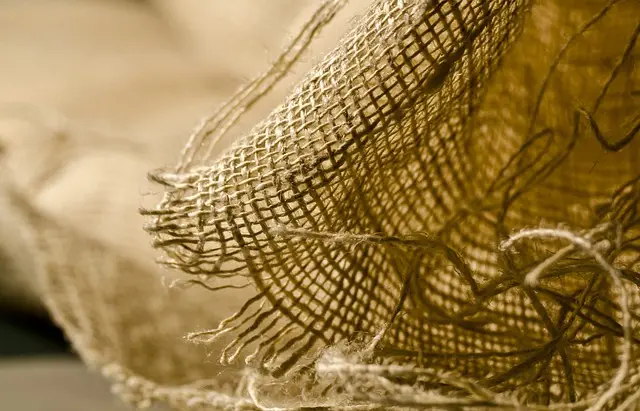Red Bali Kratom and Maeng Da Kratom are both valued for their analgesic properties, with Red Bali offering a calming, long-lasting pain relief suitable for chronic discomfort, while Maeng Da provides a more potent and stimulating effect that can be beneficial for acute muscle soreness. The alkaloids 7-hydroxymitragynine and mitragynine are key components in both strains, contributing to their pain-relieving effects. Users should approach kratom use responsibly, starting with low doses to gauge personal response and adhering to safe dosage practices to avoid dependency. It's important for individuals to consider the legal status of kratom in their area and consult with healthcare professionals before incorporating these strains into their health regimen to ensure safe and effective use for muscle soreness relief. Red Bali Kratom vs Maeng Da Kratom: choose based on individual pain needs, preference, and tolerance, as both have distinct effects that cater to different user requirements.
Muscle soreness can be a significant hindrance to one’s daily activities and exercise regimen. As an increasing number of individuals explore natural remedies for pain management, the conversation around kratom’s potential benefits has gained traction. In this article, we delve into the comparative efficacy of two prominent strains of kratom—Red Bali Kratom and Maeng Da Kratom—in providing muscle soreness relief. We examine their user experiences, analgesic properties, and discuss crucial dosage and safety considerations. Understanding the nuances between Red Bali Kratom vs Maeng Da can empower users to make informed decisions about incorporating kratom into their wellness routines for effective pain relief. Join us as we dissect the mechanisms behind these strains’ reported benefits, balancing scientific evidence with real-world user insights.
- Exploring the Effectiveness of Red Bali Kratom Versus Maeng Da for Muscle Soreness Relief
- Comparing Red Bali and Maeng Da Kratom: User Experiences and Analgesic Properties
- Understanding Dosage and Safety Considerations When Using Red Bali Kratom or Maeng Da for Muscle Soreness
Exploring the Effectiveness of Red Bali Kratom Versus Maeng Da for Muscle Soreness Relief

When delving into the realm of natural remedies for muscle soreness, two prominent strains of kratom often come to the forefront for their potential benefits: Red Bali Kratom and Maeng Da. Both strains are celebrated for their unique alkaloid profiles, which may contribute to muscle relaxation and pain relief. Red Bali Kratom, known for its sedating effects, is derived from the islands of Bali in Indonesia and is traditionally used to alleviate stress and induce a calming sensation throughout the body, which can be beneficial for soothing sore muscles. Its analgesic properties are believed to stem from the presence of alkaloids like 7-hydroxymitramine and mitragynine, compounds that interact with opioid receptors in the brain, potentially reducing pain perception.
In contrast, Maeng Da Kratom, which translates to “Pime Needle” due to its high potency and quality leaves used, is another potent strain that has garnered attention for its stimulating and analgesic effects. This strain, originating from Thailand, contains a robust concentration of alkaloids, including 7-hydroxymitragynine, which is thought to be the key driver behind its painkilling and muscle relaxant properties. Users often report that Maeng Da provides a more energized sense of well-being while effectively managing discomfort. The balance between stimulation and analgesia makes Maeng Da a versatile option for individuals seeking relief from muscle soreness, whether it’s due to exercise, injury, or chronic pain conditions. Both Red Bali and Maeng Da kratom offer distinct benefits, and their effectiveness in providing muscle soreness relief may depend on an individual’s unique needs and body chemistry. Users should approach the use of kratom with caution, adhering to appropriate dosage guidelines and considering consulting healthcare professionals before incorporating it into their wellness routines.
Comparing Red Bali and Maeng Da Kratom: User Experiences and Analgesic Properties

Users frequently compare Red Bali and Maeng Da Kratom for their potential muscle soreness relief properties. Both strains are popular for their analgesic effects, which can be attributed to their unique alkaloid profiles. Red Bali Kratom is known for its balancing properties, offering a blend of energy and relaxation that may help users manage pain without overwhelming stimulation. Its effects are often described as calming and long-lasting, making it a go-to choice for individuals seeking relief from chronic muscle soreness throughout the day. On the other hand, Maeng Da Kratom, which translates to “Pimp Grade” in Thai, is celebrated for its strength and potency. Users report that Maeng Da provides a more pronounced pain-relieving effect, with some describing it as both energizing and soothing, potentially beneficial for those who require strong analgesic support during physically demanding activities or for acute pain relief. The choice between Red Bali and Maeng Da Kratom often comes down to personal preference and the specific type of muscle soreness one is experiencing. Both strains have a dedicated user base that attests to their efficacy in managing discomfort, but the nuances in their effects can influence which users might prefer for their individual needs. When considering Red Bali Kratom vs Maeng Da Kratom for muscle soreness relief, it’s essential to weigh the anecdotal experiences against personal pain tolerance and the nature of the muscle soreness being addressed.
Understanding Dosage and Safety Considerations When Using Red Bali Kratom or Maeng Da for Muscle Soreness

When exploring natural remedies for muscle soreness, Red Bali Kratom and Maeng Da emerge as popular choices among users. Both strains are renowned for their potential to alleviate pain and discomfort; however, understanding dosage and safety considerations is paramount when incorporating them into a wellness routine. Red Bali Kratom is known for its calming and sedative properties, making it a preferred choice for those seeking relief from chronic muscle soreness without overstimulation. Its alkaloid profile, which includes 7-hydroxymitragynine and mitragynine, is credited with providing analgesic effects that can ease pain. Conversely, Maeng Da kratom boasts a higher alkaloid concentration due to its unique cultivation process, potentially offering enhanced pain-relieving benefits. This strain is often favored for its balanced effects of energy and relaxation, which can be beneficial for muscle recovery in active individuals.
Regardless of the choice between Red Bali and Maeng Da, adhering to a safe dosage protocol is crucial. Overuse or misuse of kratom can lead to adverse side effects and potential dependency. It is recommended that new users start with a low dose to gauge individual sensitivity before gradually increasing the amount as needed. The typical dose for pain relief ranges from 2 to 8 grams, but this can vary significantly between individuals. Safety precautions also include monitoring the duration of use, as prolonged use may necessitate a tolerance break to restore kratom’s efficacy. Additionally, users should be aware of the legal status of kratom in their jurisdiction, as it varies across different regions and is subject to regulatory changes. Always consult with a healthcare professional before integrating Red Bali Kratom or Maeng Da into your health regimen to ensure safe and effective use for muscle soreness relief.
In conclusion, the evidence suggests that both Red Bali and Maeng Da kratom varieties can offer significant muscle soreness relief. The comparative analysis of user experiences and the inherent analgesic properties of these strains reveal a clear preference among users for their efficacy in addressing muscle pain. While dosage and safety remain critical considerations, with careful attention to individual sensitivity and responsible use, Red Bali Kratom versus Maeng Da presents a compelling exploration for those seeking natural remedies for post-exercise discomfort. It is clear that further research could provide more nuanced insights into the optimal application of these strains for muscle soreness relief. Prospective studies will be instrumental in advancing our understanding of kratom’s role in pain management and ensuring its safe and effective use within the scope of holistic wellness practices.






